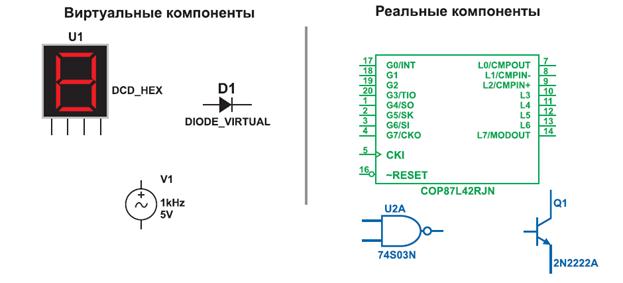Pre-text Exercises1. Read the names of the faculties. Give Ukrainian equivalents: Faculty of Applied Mathematics and Computer-integrated Systems; Civil Engineering and Architecture Faculty; Faculty of Ecology and Natural Resources Use; Faculty of Economics and Entrepreneurship; Faculty of Management; Faculty of Water Management; Hydrotechnical and Hydropower Engineering Faculty; Faculty of Land Management and Geoinformation; Mechanical and Heatpower Engineering Faculty.
2. Read the names of the specialities. Give Ukrainian equivalents: Hydrotechnical Construction; Hydromelioration; Automobile Engineering; Hoisting Transport, Building and Land Reclamation Machines and Equipment; Mineral Mining Engineering; Logistics and Transport Management; Accounting and Audit; Finance; Management of Organization; Applied Mathematics; Human Resources Management and Economics of Labour; Ecology and Environmental Engineering; Land Management and Cadastre; Agrochemistry and Soil Science; Civil Engineering; Technology of Production of Building Constructions and Elements; Aerodrome and Highway Engineering; Heat and Gas supply and Ventilation; Town Planning and Development; Water Supply and Water Disposal; Automated Control of Technological Processes; Water Bioresources and Aquaculture; Architecture of Structures; Economics of Production; Heatpower Engineering; Geoinformation Systems and Technologies; Hydropower engineering.
3. Look through the email and answer the following questions: 1. What university is the letter about? 2. Is the history of the university described? 3. Are the faculties and specialities mentioned? 4. Are students’ everyday activities described? 5. Is the university campus described?
4. Read the email. To understand it better consult active vocabulary: Date: Thu., 19 Sept. 2012 21:42:37 From: Maksym Marchenko<[email protected]> To: Mike Nilson <[email protected]> Subject: National University of Water Management and Nature Resources Use Dear Mike, Well, this is my third week at the University. Our group has already visited the University Museum. It gave me the idea of its history, structure, teaching staff, and students’ life. Let me tell you about my impressions. The history of the University began in the year 1922, with the foundation of its forerunner Hydromeliorative technical school. Five years later it became a school of higher learning known as Kyiv Hydromeliorative Institute. In 1959 it was moved to the city of Rivne and granted the status of All-Republican Institute. In December 1995 the Institute was reorganized into the State Academy. In 1998 the Academy acquired the status of a University, with the title Rivne State Technical University. In 2004 the University was granted the highest status and now its title is the National University of Water Management and Natural Resources Use. The University has become one of the leading scientific, educational and technological centres of Ukraine. It trains engineers and research workers for different branches of national economy. It is considered to be Alma-Mater for almost 50,000 specialists who work in Ukraine and abroad. The University enjoys national and international reputation for the contribution in scientific research and training of skilled specialists. The University currently enrolls more than 15,000 day-time and correspondence students. They study at nine faculties: Faculty of Applied Mathematics and Computer-integrated Systems; Civil Engineering and Architecture Faculty; Faculty of Ecology and Natural Resources Use; Faculty of Economics and Entrepreneurship; Faculty of Management; Faculty of Water Management; Hydrotechnical and Hydropower Engineering Faculty; Faculty of Land Management and Geoinformation; Mechanical and Heatpower Engineering Faculty. A modular system of academic programmes has been introduced, following the example of the world's leading technological universities. In addition to engineering degrees in various specialisms, these programmes lead to the degree of Bachelor and Master. It takes four years to complete a course leading to the degree of Bachelor, five years to gain the degree of Engineer (Specialist) and Master. Students may specialize in 28 areas: Hydrotechnical Construction; Hydromelioration; Geoinformation Systems and Technologies; Automobile Engineering; Hoisting Transport, Building, Road and Land Reclamation Machines and Equipment; Mineral Mining Engineering; Equipment of Chemical Production and Building Materials; Heat Power Engineering; Logistics and Transport Management; Accounting and Audit; Management; Applied Mathematics; Management of Labour Resources; Ecology; Land Management and Cadastre; Agrochemistry and Soil Science; Civil Engineering; Technology of Production of Building Constructions and Elements; Aerodrome and Highway Engineering; Heat and Gas Supply and Ventilation; Town Planning and Development; Water Supply and Water Disposal; Automated Control of Technological Processes; Water Bioresources and Aquaculture; Architecture of Structures. Most of the faculties have day-time as well as correspondence departments. The term of study for day-time students lasts 4, 5 or 6 years. The academic year runs from September till June and is divided into two terms: Autumn and Spring, and it has two vacations. During the term students have to attend lectures, classes and seminars. The study of theory is usually accompanied by practical training. At the end of each term our students take exams, tests and hand in yearly projects. At the end of training they defend their diploma projects. Advanced students may defend them in a foreign language. Today, our University has a teaching and research staff ofover 700 professors, associate-professors, senior and junior lecturers, who offer many-sided and profound knowledge to their students. They are also engaged in research work. A lot of their inventions have been patented and introduced into production not only in Ukraine but abroad. The University provides the requisite teaching, research and recreation facilities for its day-time students, postgraduates, lecturers and other staff. There are numerous spacious lecture theatres, laboratories, study rooms with up-to-date equipment, computer centres, design studios, etc. The University campus is conveniently situated on two picturesque hills in the outskirts of Rivne. The location has the advantages of easy access to the railway and bus stations as well as to the main shopping centres, banks and cafes. The campus includes seven academic buildings; eight halls of residence, where suitable living accomodation is arranged; library and computing centres, which help students at every stage of their training; sport facilities, where students can enjoy the benefits of regular exercise. Full medical service is available in health centre. The University offers an enormous range of arts activities. Anyone who enjoys singing and dancing can join the University choir, music, song and dance groups. Our University, one of the prestige higher educational institutions in Ukraine, is highly rated by young people.
With best regards, Maksym P.S. I’d like you to write about your Institute:-)
|




